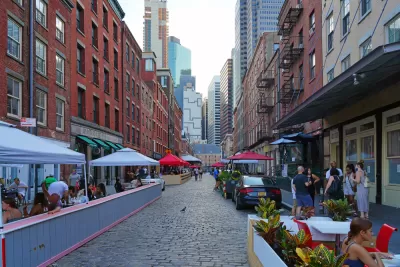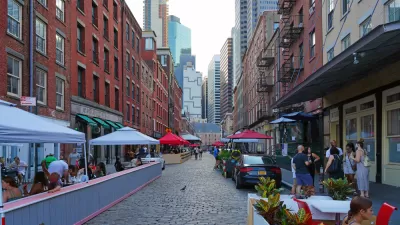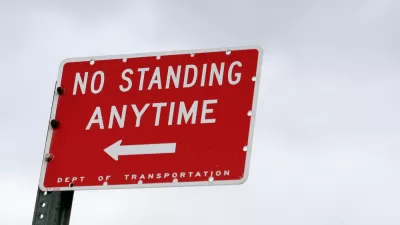Imagining a post-car (or car-lite) New York City.

Henry Grabar writes:
In the year since the pandemic shut down New York City, momentum has been building around the idea that the city ought to take back more space from cars. Especially while it’s still in partial hibernation.
The various phases of the pandemic have given repeated occasions for New Yorkers to witness what a city can be without cars filling every space to the brim and beyond.
"We no longer had to imagine a city that gave less of itself to automobiles; we were suddenly, sort of accidentally, living in it," write Grabar.
The Big Apple's low car ownership rates and high population density make it the natural candidate to push the experiment even further, according to Grabar, and one safe streets organization, Transportation Alternatives, has recently published a report called 25x25 that imagines the possibilities of closing one-quarter of the city's streets to automobiles by 2025.
Grabar lists some of the potential outcomes envisioned by the report, like 1,000 miles of pedestrian streets, a car-free block available for play in front of every public school in the city, 500 miles of bus lanes and 40 miles of busways, and 5.4 million square feet of street space available to local businesses and nonprofits, among many, many other possibilities.
The kicker for Grabar's take on the report: New York has the most expensive land in the world—more of it should do something other than store cars.
FULL STORY: What New York Could Do if It Took a Quarter of Its Roads Away From Cars

Maui's Vacation Rental Debate Turns Ugly
Verbal attacks, misinformation campaigns and fistfights plague a high-stakes debate to convert thousands of vacation rentals into long-term housing.

Planetizen Federal Action Tracker
A weekly monitor of how Trump’s orders and actions are impacting planners and planning in America.

San Francisco Suspends Traffic Calming Amidst Record Deaths
Citing “a challenging fiscal landscape,” the city will cease the program on the heels of 42 traffic deaths, including 24 pedestrians.

Defunct Pittsburgh Power Plant to Become Residential Tower
A decommissioned steam heat plant will be redeveloped into almost 100 affordable housing units.

Trump Prompts Restructuring of Transportation Research Board in “Unprecedented Overreach”
The TRB has eliminated more than half of its committees including those focused on climate, equity, and cities.

Amtrak Rolls Out New Orleans to Alabama “Mardi Gras” Train
The new service will operate morning and evening departures between Mobile and New Orleans.
Urban Design for Planners 1: Software Tools
This six-course series explores essential urban design concepts using open source software and equips planners with the tools they need to participate fully in the urban design process.
Planning for Universal Design
Learn the tools for implementing Universal Design in planning regulations.
Heyer Gruel & Associates PA
JM Goldson LLC
Custer County Colorado
City of Camden Redevelopment Agency
City of Astoria
Transportation Research & Education Center (TREC) at Portland State University
Jefferson Parish Government
Camden Redevelopment Agency
City of Claremont





























